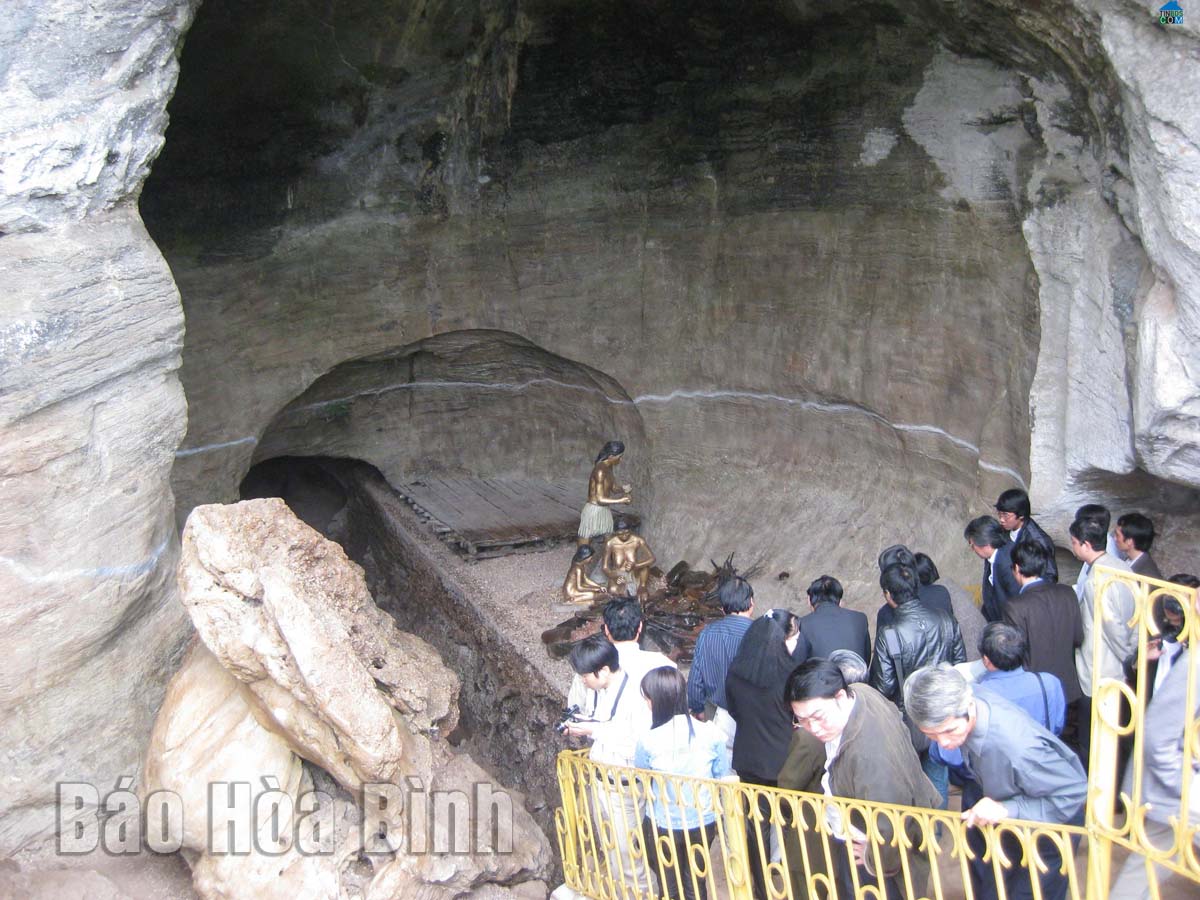
(HBO) – With 72 caves and archaeological relic sites, Hoa Binh province has been identified as one of the cradles of the "Hoa Binh Civilisation” by archaeologists, scientists, and anthropologists. Over the past years, local authorities have paid great attention to the conservation and promotion of this civilisation’s values.
"Hang xom Trai” (Trai Village Cave) in Tan Lap commune of Lac Son district is
one of the typical archaeological relic sites of the "Hoa Binh Civilisation”.
According to the provincial Museum, karst caves
in Hoa Binh attracted attention from archaeologists of the French School of the
Far East in the 1920s. Through surveys, excavations, and studies, scientists
found that those karst caves contain vestiges of a civilisation that developed
between the late period of the Old Stone Age’s and the early period of the New
Stone Age, and named it "Hoa Binh”.
The "Hoa Binh Civilisation” existed about 30,000
- 4,000 years ago not only in Vietnam but also other places across Southeast
Asian such as Indonesia, Myanmar, Thailand, and the Philippines, as well as
China. More than 130 places dating back to the civilisation have been found in
Vietnam, and over half of them were discovered by Vietnamese archaeologists
during 1966 - 1980. Those relics scattered in various localities but
concentrated in Hoa Binh (72 sites) and Thanh Hoa (32 sites).
The typical relic sites and artefacts discovered
in Hoa Binh reflect the life and livelihoods of prehistoric humans. Most of the
relics have been protected, restored, and submitted to seek recognition, and
many of them have gained the status of national importance.
In the recent past, all-level Party committees,
administrations, and people of all ethnic groups in the province, especially
the cultural sector, have been stepping up the conservation and promotion of
this civilisation’s cultural values. They have enhanced cooperation with
domestic and international organisations in civilisation research, surveyed
archaeological relics, and taken measures for managing, conserving, and bringing
into play its values. In addition, communications in different forms and
languages have been stepped up to introduce the Hoa Binh Civilisation to major
cultural, economic, and political centres of Vietnam and at international
scientific conferences.
To mark the 90 years since the world recognised
the Hoa Binh Civilisation and gave it the name (1932 - 2022), at the beginning
of this year, the provincial People’s Committee issued Plan No. 50/KH-UBND on
the organisation of cultural, sports, and tourism events.
Luu Huy Linh, Deputy Director of the provincial
Department of Culture, Sports and Tourism, said the cultural sector is planning
activities to celebrate the 90th anniversary of the recognition and naming of
the "Hoa Binh Civilisation”, including seeking permission for excavating some
archaeological caves in Lac Son district, inviting scientists to a national
seminar on the civilisation, and working with the People’s Committee of Hoa
Binh city to choose a road to name "Colani” so as to honour contributions by
French archaeologist Maeleine Colani who discovered and named the civilisation
"Hoa Binh”./.
Hoa Binh province has carried out multiple programmes and initiatives to revive its cultural heritage which has gradually fallen into oblivion through the ebbs and flows of history.
The most prominent and defining feature in the prehistoric era of Hoa Binh is the Hoa Binh Culture. The Culture was first discovered in Hoa Binh. The significant prehistoric culture represents not only Vietnam but also Southeast Asia and southern China. Through excavations of cave sites in the limestone regions of Hoa Binh, French archaeologist M. Colani introduced the world to a "Stone Age in Hoa Binh province – Northern Vietnam" in 1927. On January 30, 1932, the First Congress of Far Eastern Prehistorians, held in Hanoi, officially recognised the Hoa Binh Culture.
Known as the "Land of Epic History”, Hoa Binh province, the gateway to Vietnam’s northwest, boasts a strategic location and a unique cultural tapestry woven by its ethnic minority communities.
The People's Committee of Luong Son District recently held a ceremony to receive the certificate recognizing Sau Communal House in Thanh Cao Commune as a provincial-level historical and cultural site.
Recognising the importance of cultural heritage preservation in protecting and promoting the value system of Vietnamese culture, and serving socio-economic development in the new period, Party committees and local administrations in Hoa Binh province have identified it as a key task in the cultural development strategy. The province has been making efforts in mobilising resources, creating consensus among people and engaging ethnic communities in preserving and promoting cultural identity.
Hoa Binh province has captured growing attention both domestically and internationally for its distinctive cultural heritage and rich history. Most notably, it has been renowned for its famous Hoa Binh culture, considered the cradle of ancient Vietnamese civilisation. Looking ahead to significant milestones in 2025 and the 140th anniversary of province establishment in 2026, Hoa Binh Newspaper presents a comprehensive overview of the province's development across economic, social, cultural, tourism, and security domains.



